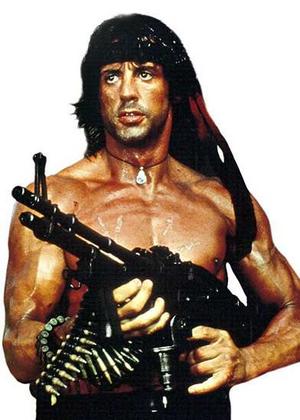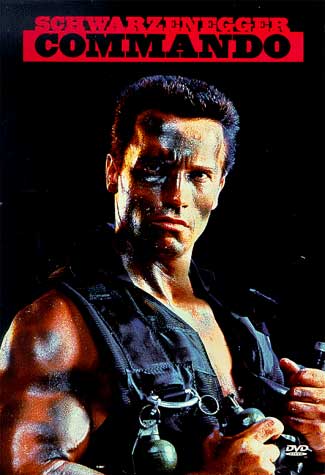Macho Feminism pt I
A Look at Female Spectatorship & Genre
The role of the female in cinema as both screen presence and spectator exists as a highly debated struggle between filmic representation and psychological theory. In her essay Visual Pleasure in Narrative Cinema, Luara Mulvey explores the power of the female image in relation to cinema and psychoanalysis. Early in this essay, she writes: "Woman then stands in patriarchal culture as signifier for the male other, bound by a symbolic order in which man can live out his fantasies and obsessions through linguistic command by imposing them on the silent image of a woman still tied to her place as bearer of meaning, not maker of meaning" (Mulvey 838). In simpler terms, Mulvey describes the woman as an object of fantastic lust trapped in a male-oriented society. She furthers this concept by discussing Freud's notions of scopophilia and the voyeuristic gaze. According to Freud, it is natural human instinct to regard other people as objects, often subjecting them to controlling, curious, or erotic gazes. Mulvey aligns this with the cinema, considering film a stimulant of the voyeuristic instinct and separating it into a contradition between the libido and ego. Out of this contradiction, she surmises, forms identification processes and elicits sexual desire. From there she continues to outline the cinematic functions of the female: "as erotic object for the characters within the screen story, and as erotic object for the spectator" (Mulvey 841-42). She describes the current Hollywood narrative format as supportive of the male role in accelerating story, and thus controlling fantasy and gaze. She writes: "the male protagonist is free to command the stage, a stage of spatial illusion in which he articulates the look and creates the action" (Mulvey 842). Consequentially, spectatorss can identify with male protagonists, and indrectly possess the sexualized female. Mulvey broadens these ideas with more psychoanalysis; the threat of sexual castration, represented by the female screen presence, forces the male to escape this anxiety via the destruction or fetishizing of the female.
Mary Ann Doane's essay Film & the Masquerade: Theorizing the Female Spectator takes these concepts one step further, allowing room for the female audience. Like Mulvey, Doane channels her theories through Freud and psychoanalysis. She writes that the voyeur must maintain distance between objects and self in order to create desire, and that the female spectator can never form this distance because of a "claustrophobic closeness" to the female body present on screen (Doane 24). Too easily related to the objectified, female spectators must therefore readily accept a masculinized form of spectatorship. Doane likens this to the transvestite; mobile in their sexual identity, females can steal masculine traits, and often compensate for this masculinity by excessively flaunting femininity. This explains the creation of the femme fatale character, a sort of sexually empowered distinctly feminine mask. Doane fuels her article with cinematic examples of desirous, gaze controlling females - all of whom are punished or meet untimely deaths. She concludes by almost dismissing the feminine spectral gaze entirely.
My interest in these theories lies not in general assessments of feminine spectatorship, but rather as they apply to specific film genres. Though it is fair to characterize the female role in cinema, both as spectator and image, according to current pyschological practices, I do not feel it is worthwhile to apply these theories to cinema as a whole. Rather, it is of great necessity to study the feminine gaze in relation to genre and the evolving trends of cinematic practice. Genre, defined as the categorical division of artistic works based on specific criterion, shapes a great deal of cinematic traditions and representations. How an object appears and functions on screen depends significantly on the genre or genres in which a film is based. For example, a gun in a horror film might signify death or fear to the spectator, while at the same time affirming safety or security in an action thriller. This does not stand to negate Mulvey or Doane's claim that women are assigned certain (often surface or erotic) positions in cinema, but rather calls for the further exploration of these positions as they are related to distinct filmic types.
Other film critics seem to agree with me. Linda Williams writes: "this [feminine] victimization is very different in each type of film and cannot be accounted for simply by pointing to the sadistic power and pleasure of masculine subject positions punishing or dominating feminine objects" (Williams 732). In her essay Film Bodies: Gender, Genre & Excess, Williams complicates Doane's assertions about the female spectator by raising questions specific to genre. For example, Williams discusses Horror, a genre referred to by Doane as an example of defeating feminie gaze, claiming that even in the most violent of feminine suffering, there must always remain a component of either power or pleasure for the woman victim. Similarly, Williams argues that while melodrama might seem to drown female viewers in an excess of forced emotion, it also suggests and alignment with powerful matriarchal figures. Ultimately, she concludes: "the subject positions that appear to be constructed by each of the genres are not as gender-lionked and gender-fixed as has often been supposed" (Willaims 735).
But what happens when we remove the sexualized woman from the screen entirely? What if she is replaced by glorified male figures? What, if anything, shifts in gendered spectral gaze? In order to address these questions, we must find a film genre in which the female screen presence is rendered obsolete. The Macho Action film may fit this description. 
Developed out of Hollywood's displacement of art to action in the 1980's, the Macho film places and emphasis on a sort of surreal masculinity where the male body occupies the main narrative focus. Fueled by a sort of weightless politics, these hyper-male heroes obliterate their way through thinly outlined, special-effects-laden espionage scenarios. Starring buff body-builders such as Arnold Schwartzenegger, Sylvester Stallone, and Chuck Norris, the Macho film glorifies the sculpted male figure, often focusing on the charm and sex appeal of the Macho while still remaining action packed. Camera use in these films general accents physical size, featuring extreme close-ups of biceps, triceps, pecks and other impressive physical attributes. These male bodies can also withstand extreme physical pain, as if they posses superhuman tolerance and can refocus their agony towards eliminating the enemy. And, interestingly enough, sexualized female presence in these films appears almost non-existent (Vincente).
Look out for Macho Feminism Part II coming soon!

No comments:
Post a Comment